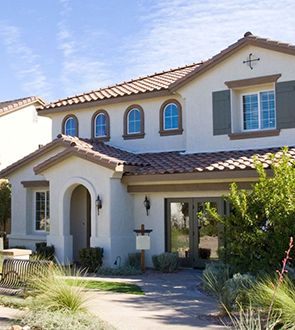Yes, It’s Getting Easier to Get a Mortgage. Here’s How You Can Take Advantage
 It can be hard to stay on top of a changing real estate market from day-to-day, but it’s a matter of fact that there are more available mortgage products out there than ever before for many different kinds of homebuyers. If you’re wondering how you can take advantage of easier lending opportunities and strike while the iron is hot, here are some things to consider.
It can be hard to stay on top of a changing real estate market from day-to-day, but it’s a matter of fact that there are more available mortgage products out there than ever before for many different kinds of homebuyers. If you’re wondering how you can take advantage of easier lending opportunities and strike while the iron is hot, here are some things to consider.
Take Care Of Your Credit
While many regulations on mortgage applications may have been loosened in recent years, it goes without saying that having a better credit score will still enable you to qualify for a mortgage more readily. Instead of risking it, ensure that you’ve obtained a copy of your credit score and are aware of where you stand as a financial risk. By working on your credit and correcting any errors on your report, it will be that much more likely to have your mortgage application approved.
Saving For A Down Payment
It’s often said that 20% is the ideal amount to put down in order to avoid private mortgage insurance, but it’s not the required amount in order to invest in a home. While it may save money, in the long run, to put more money down, for those who want to get into the housing market, there are many opportunities for putting a lot less down and still being able to purchase. It’s possible you may want to hold off until you can save up for your down payment, but possibilities exist for mortgages with as little as 3.5% down.
Dealing With Closing Costs
Saving up for a down payment and deciding to invest in a monthly mortgage payment is a significant commitment, but adding mortgage closing costs to that can be a bridge too far for many potential homebuyers. Fortunately, many lenders nowadays are offering the opportunity for closing costs like origination and attorney fees to be included in the total cost of the loan. While this will bump up the amount of your monthly payment, it can make a mortgage more feasible from the start.
For many people, there’s a lot of stress that goes along with applying for a mortgage, but with lower down payments required and closing costs included in the total price, getting approved has become a lot easier in recent years. If you’re currently in the market for a new home, contact your trusted mortgage professionals for more information.

 Sales of new and previously owned homes were lower in April after reaching near-record levels in March. Mortgage rates were lower last week and new jobless claims were little changed.
Sales of new and previously owned homes were lower in April after reaching near-record levels in March. Mortgage rates were lower last week and new jobless claims were little changed. As a potential homebuyer who is new to the market, many of the terms and mortgage products available to you can be more than a little confusing. Piggyback loans might be a little less familiar than many other options, but if you’re ready to jump into the housing market this type of mortgage can be useful for you. If you’re hoping to invest in a home sooner rather than later, here are the details on this type of loan.
As a potential homebuyer who is new to the market, many of the terms and mortgage products available to you can be more than a little confusing. Piggyback loans might be a little less familiar than many other options, but if you’re ready to jump into the housing market this type of mortgage can be useful for you. If you’re hoping to invest in a home sooner rather than later, here are the details on this type of loan.